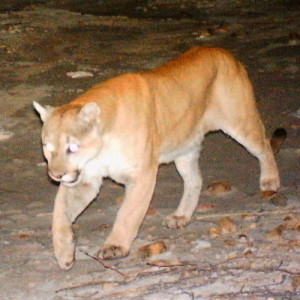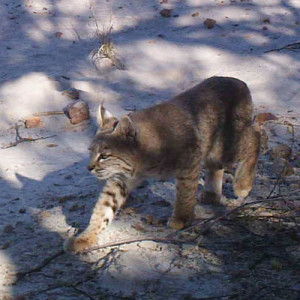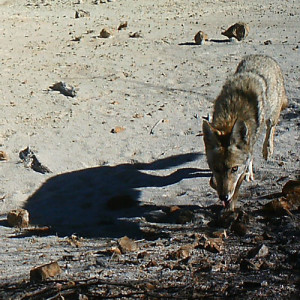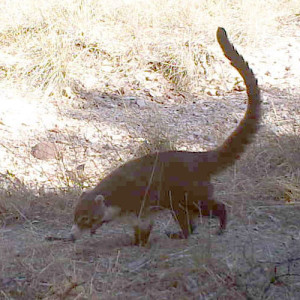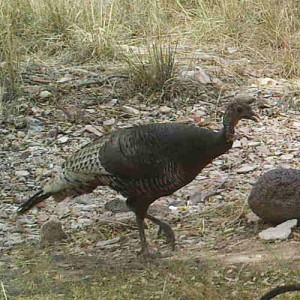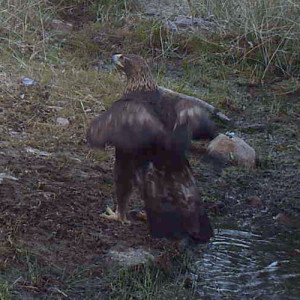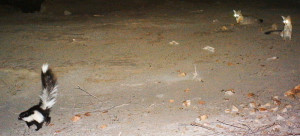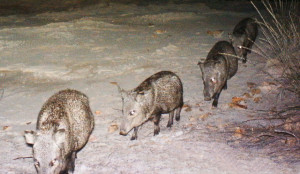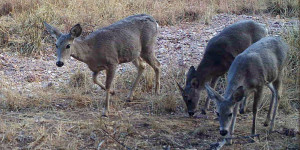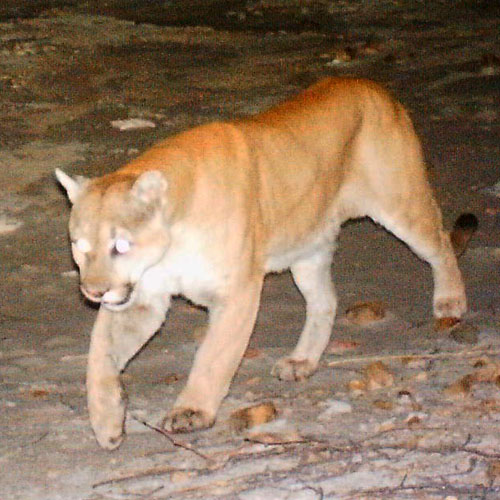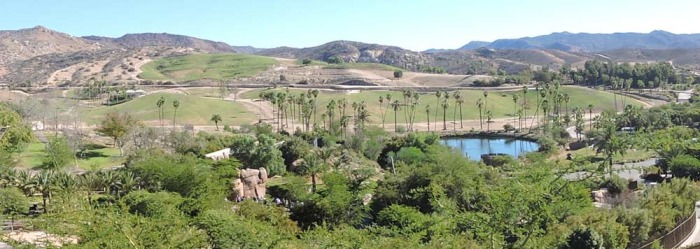“Hermano, hermano!” shouted the crouching man, twenty yards up the canyon, aiming his handgun at us. Oddly, we felt no panic but wondered why he would point a weapon at a “brother”. We held still. A second man had his hand at his hip but soon relaxed and smiled at us. The gunman looked embarrassed and walked off behind the trees, to make some very important radio call. Trying to take it all in, we just sat on our log under the shady oak in a remote canyon near the Mexican border.
Officer Friendly came closer and apologized for mistaking us for illegal immigrants. We actually had to laugh; two more unlikely illegals would be hard to find. Officer Quickdraw joined in the apologies, revealing that they were border patrolmen new to the area. They went their way without even noticing the Covert Assassin.
The what? That was the inconspicuous trail camera attached to the oak tree behind us – its brand name probably designed to lure hunters to buy it. We were downloading its photos of deer, javelina, mountain lions, foxes and a turkey.
Have you ever walked in the woods and wondered what happens when no-one is there? What shy creatures prowl at night? A trail camera can tell you. It’s a weatherproof digital camera with a motion sensor. Anything moving in front of the camera gets photographed, day or night. In places where people don’t go, we can use a camera with a flash. On trails often used by people, our cameras use an infra-red lamp which shows only a faint red glow – certain kinds of nocturnal hiker might smash the camera if they realized it was there!
We monitor several cameras for Sky Island Alliance, an organization that studies and protects the wildlife of the ‘sky island’ mountain ranges scattered across the Southwest. To avoid becoming genetically isolated, animals must travel from one ‘island’ to another, across a ‘sea’ of farmland, desert and suburbia. Which routes do they use? SIA’s Wildlife Linkages volunteer program investigates this through direct tracking (subject of a future blog) and through the use of trail cameras.
Every month or two, we visit our cameras. Will they still be there? Will there be something rare like a jaguar or ocelot? Those spotted cats are the Holy Grail of animal trackers in Arizona, but so far we’ve not found any. However, our sightings of commoner animals add to knowledge about their daily and seasonal activity patterns.
Checking the cameras is always a thrill, even without confused gunmen.
Here are some of the animals we’ve ‘captured’ on our cameras:
